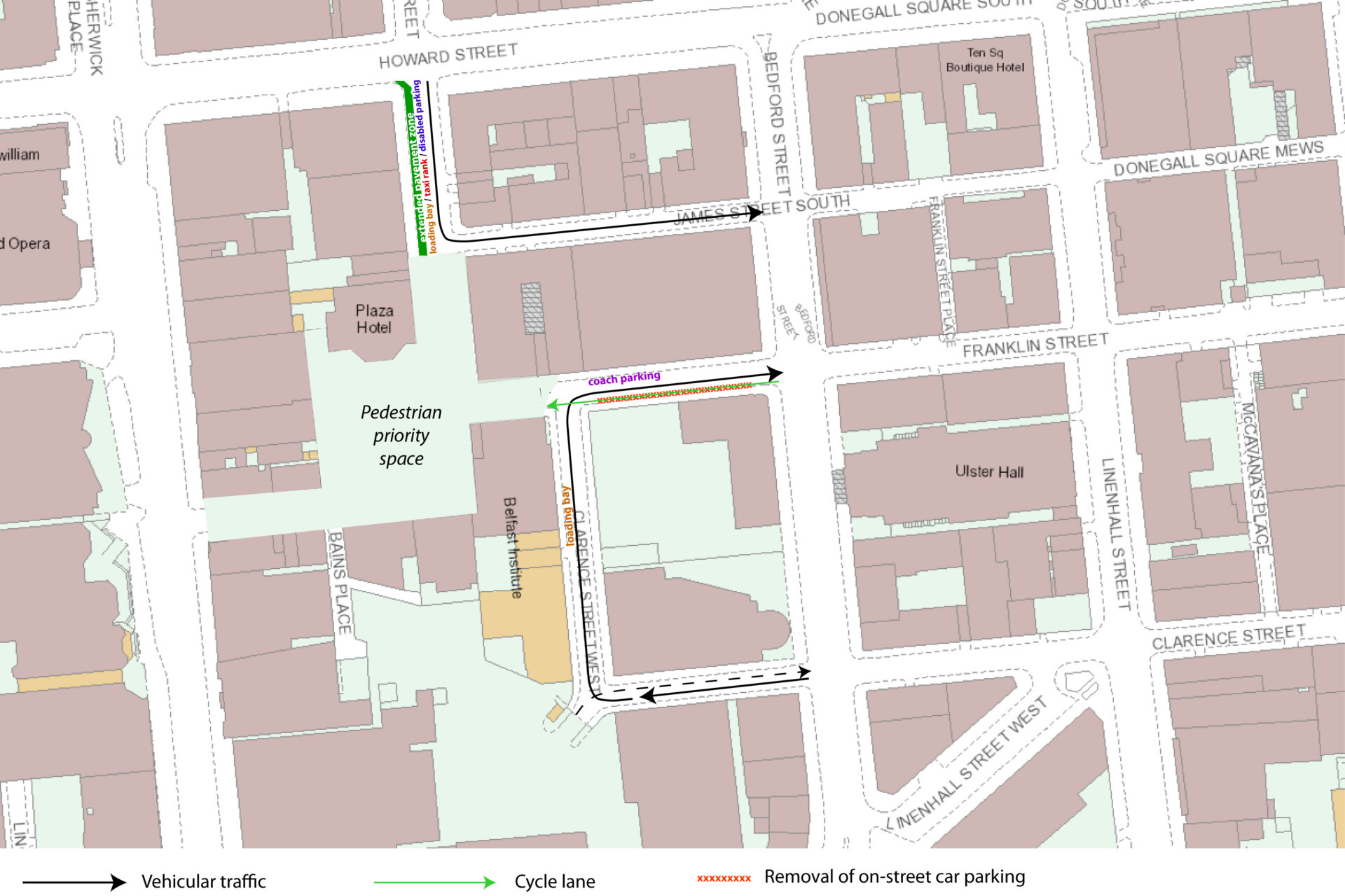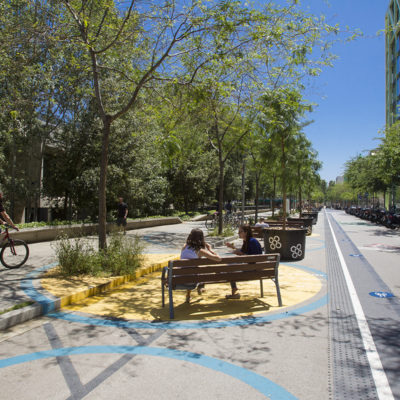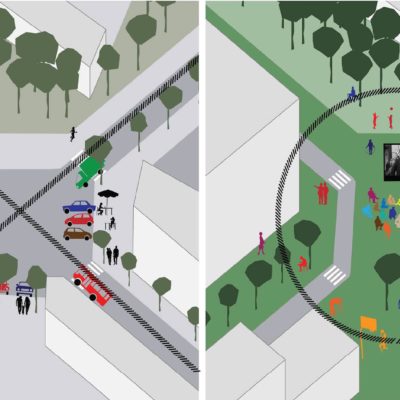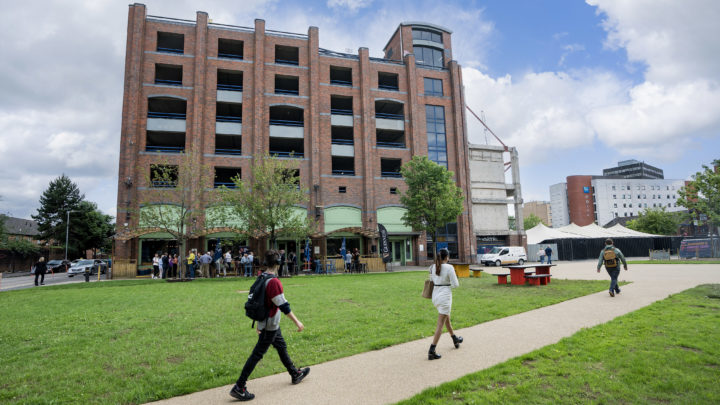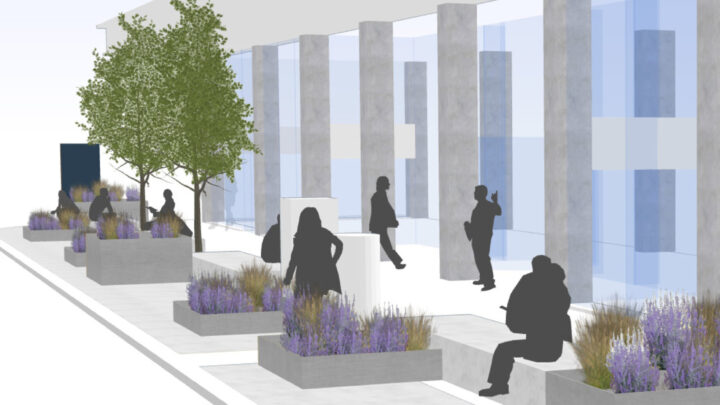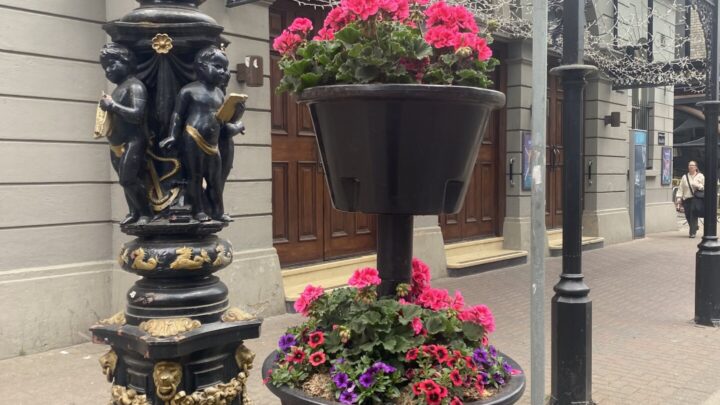Projects
LQ Superblock
Superblocks
The concept behind the ‘Superblocks’ model (Superilla in Catalan) was originally conceived in the 1980s and aims to reimagine how urban spaces can be radically transformed to increase active and low-carbon mobility, support biodiversity and encourage greater social cohesion.
The concept was first implemented in Barcelona to introduce nature-based solutions and ‘tactical urbanism’ interventions such as painted cycle lanes, planters and street furniture. In doing so, Barcelona’s superblocks have been successful in creating more walkable, mixed-use public space that have helped to reduce air pollution, noise and accidents from road traffic, whilst increasing access to green space and encouraging less sedentary lifestyles.Typical interventions include:
- Pedestrian priority and shared space where vehicles and pedestrians coexist;
- Low (10 kilometers-per-hour) speed limit and only allow access for local residents, public transit, delivery vehicles, and emergency services;
- Great emphasis on nature-based solutions, both tree planting and sustainable urban drainage systems (SUDs);
- Integrated children’s play spaces and outdoor adult fitness equipment;
- Other street furniture to encourage communal use of the public realm, usable for both office workers, residents and visitors of all ages and abilities;
- Encouraging positive use of the public realm by adjacent ground-floor businesses, for example outdoor dining or pop-up events;
- Creative interventions using light-touch, low cost methods like painting over former street surfaces.
Linen Quarter BID commissioned Dark Matter Lab / ARUP to produce an initial report that explores how the model could be implemented in the Linen Quarter. Initial scoping has identified two potential superblocks located between (1) Great Victoria Street, Bruce Street, Bedford Street and Howard Street; and (2) Bedford Street, Ormeau Avenue Adelaide Street and Donegall Square South.
BLACKSTAFF SQUARE AREA ACCESS STRATEGY
A Linen Quarter wide access study was initiated in Summer 2022 to address concerns from hospitality and entertainment venues located in the District in relation to a lack of designated road infrastructure for delivery services and customer drop-off/pick-up services. The majority of concerns raised related to streets located within the urban block between Great Victoria Street, Bruce Street, Bedford Street and Howard Street.
After an extensive round of consultation, the BID submitted a number of proposals to the Department for Infrastructure to alter the road infrastructure within this urban block. Following similar principles applied as part of the SuperBlock model, these proposals include:
- Eastbound one-way system through Brunswick Street (from Howard Street) and James Street South (to Bedford Street);
- A clockwise circular one way system through Clarence Street West (from Bedford Street), McClintock Street and Franklin Street (to Bedford Street);
- Local traffic only on Amelia Street;
- Removal and reallocation of on-street parking bays;
- Introduction of new taxi rank, blue badge parking and loading bays on Brunswick Street;
- Introduction of loading bay and coach parking on McClintock Street and Franklin Street.
